Israeli strikes killed at least 90 people and injured hundreds more in the Al-Mawasi area west of Khan Younis on Saturday, according to Palestinian health officials, in an operation the Israel Defense Forces said targeted two top Hamas officials, including Mohammed Deif, the head of Al-Qassam Brigades, Hamas’ military wing.
Palestinian health officials have called the attack a “massacre.” In an interview with Reuters, Hamas spokesperson Sami Abu Zhuri dismissed reports that the strike targeted Deif as “nonsense,” even as the scale of the attack threatened to further stall progress on already-strained cease-fire talks currently underway in Cairo and Doha.
Footage captured by Reuters showed hundreds of men, women and children running away from a large plume of smoke on the horizon. Many carried their bloodied and unconscious injured slung over their arms or on makeshift stretchers.
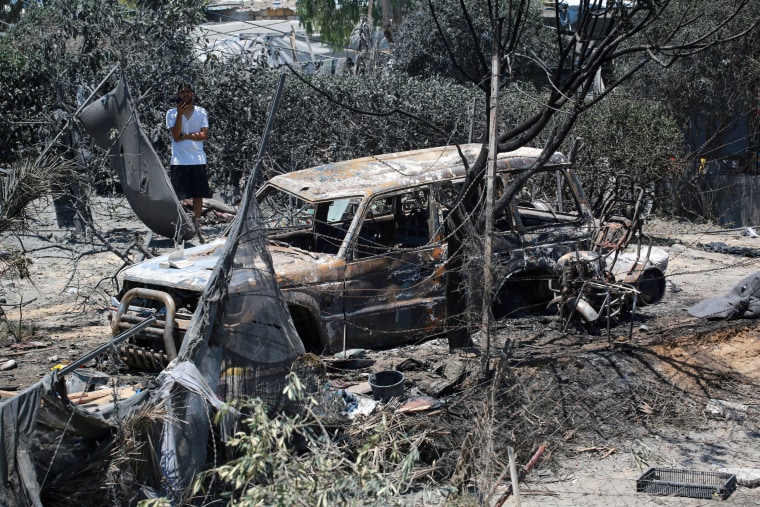
Smoke from a flaming and blown-out vehicle fogged the air as a woman wept amid the chaos. “They’re all gone, my whole family’s gone,” she said. “Where are my brothers? They’re all gone, they’re all gone. There’s no one left.”
In a press conference Saturday, IDF spokesperson Daniel Hagari said the attack was a targeted strike on a Hamas compound surrounded by trees, buildings and sheds, and not a tent complex. He added that senior military commanders Deif and Rafa Salama, as well as other Hamas terrorists, were present in the area, but did not share details of that intelligence and said the IDF was still verifying the result of the strike.
Abu Zhuri told Reuters that “all” those killed were civilians. NBC News is not able independently verify the statements of either the IDF or Hamas.
Reuters’ video showed damage and debris as people sifted through the destruction among the white tents used by displaced Palestinians. Another video, posted on Instagram and verified and geolocated by NBC News, showed dozens of people digging with shovels and their bare hands inside a wide blast crater.
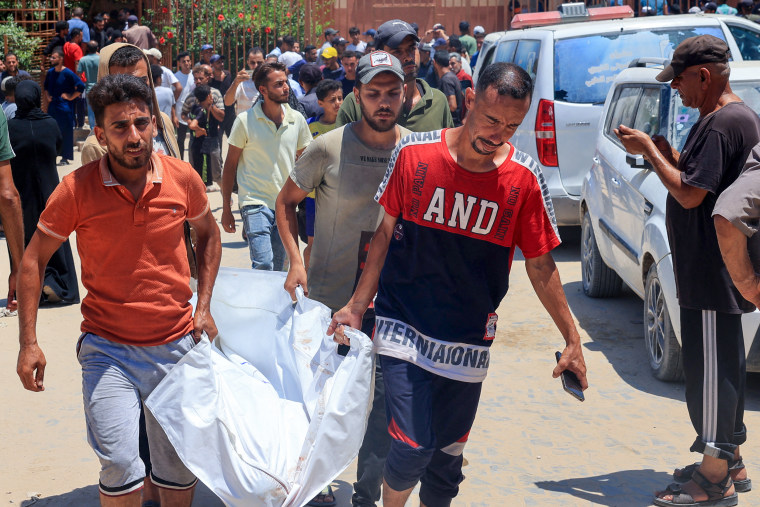
The IDF had declared Al-Mawasi a safe humanitarian zone in December, though the area has been repeatedly attacked since. During the press conference, Hagari said the IDF had called for civilians to move to the area, but that Hamas’ high-ranking leaders had embedded themselves among the population, prompting the strike.
Nearby hospitals were overwhelmed with casualties.
Mohammed Saker, a spokesperson for Nasser Hospital, told NBC News that the hospital did not have the capacity or medical supplies to deal with the wounded and injured, and that he expected “a number of wounded to die due to the lack of treatment.”
Within a few hours, Dr. Muhammad Saqr, director of the nursing department at Nasser Hospital, told Quds News Network that the hospital was “unable to continue offering medical and nursing services due to the high number of deaths, injuries and amputees.”
The Palestine Red Crescent Society posted on X that Al-Amal Hospital in Khan Younis had received dozens of patients following the strikes, including some of those displaced and living in the organization’s shelter camp inside the impacted area.
It is unclear how the strike will affect cease-fire talks, with the attack coming just one day after U.S. President Joe Biden put out a statement saying Israel and Hamas had agreed to a framework.
“Six weeks ago I laid out a comprehensive framework for how to achieve a ceasefire and bring the hostages home,” he posted on X. “There is still work to do and these are complex issues, but that framework is now agreed to by both Israel and Hamas.”
“My team is making progress and I’m determined to get this done,” Biden added.
But ongoing attacks on Gaza have repeatedly complicated already difficult negotiations. Abu Zhuri told Reuters that Saturday’s attack showed that Israel was not interested in reaching a cease-fire agreement.
Hamas has previously criticized Israel for delaying an agreement, and Prime Minister Benjamin Netanyahu has said Israel won’t agree to any deal that would prevent it from resuming its military campaign until Hamas is eliminated. U.S. Secretary of State Antony Blinken warned in May that Israel would not be able to fully eliminate Hamas’ presence in Gaza.
Netanyahu has accused Hamas of making demands that contradicted the deal brokered by Biden, though he did not specify what those demands were.
Hamas has dropped its demand that Israel commit ahead of time to a permanent cease-fire, but The Associated Press reported that the group still wants written guarantees that negotiations will continue until a permanent cease-fire is reached.
Nine months into Israel’s war on Gaza, Palestinians continue to suffer a grinding cycle of airstrikes, the pulling of charred bodies from rubble, hospitals overwhelmed with the dead and injured, and fresh rounds of destruction.
More than 80% of Gaza’s 2.3 million people have been displaced, many repeatedly as the Israeli military returned with renewed operations into parts of the enclave it had previously cleared.
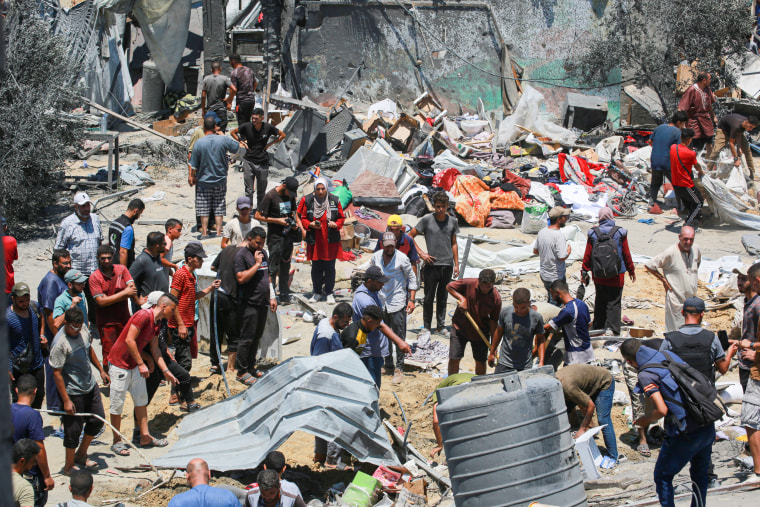
On Friday, United Nations Secretary-General António Guterres said Palestinians were being forced “to move like human pinballs across a landscape of destruction and death.”
“The extreme level of fighting and devastation is incomprehensible and inexcusable — and the level of chaos is affecting every Palestinian in Gaza and all those desperately trying to get aid to them,” Guterres said during a donor’s conference.
“Just when we thought it couldn’t get any worse in Gaza — somehow, appallingly, civilians are being pushed into ever deeper circles of hell,” the secretary-general added.
On Friday, video from an NBC News crew on the ground captured the aftermath after Israeli troops withdrew from Tel Al-Hawa, an industrial neighborhood in west Gaza City. The tall towers that the area was famous for have been reduced to rubble, while houses are charred, burned and demolished. Emergency workers say they found 20 bodies while sifting through the rubble, burned inside their homes.
“First, we were displaced to Shuja’iyya, Elsaa and El Tuffah, and then we came to the industrial zone,” Moussa Atia Eldahdouh, who spent 20 days in Tel Al-Hawa before the attack, told NBC News.
“They attacked us, and suddenly at 2 a.m., everyone was fleeing. They saw the tanks, saw the aviation, so they all fled. The airplanes began to strike; what can we do? We either live or die.”

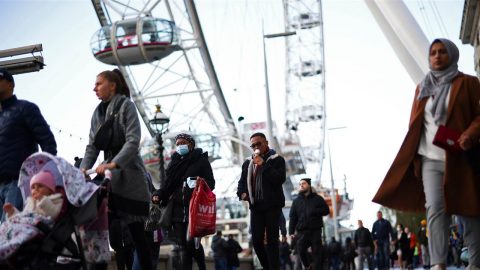

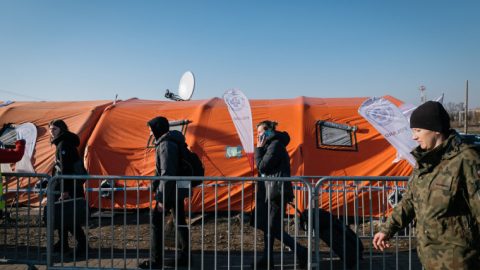
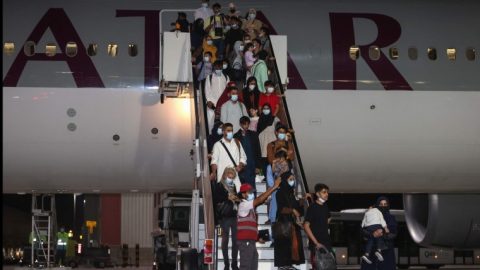
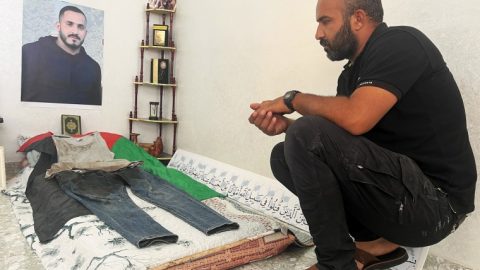
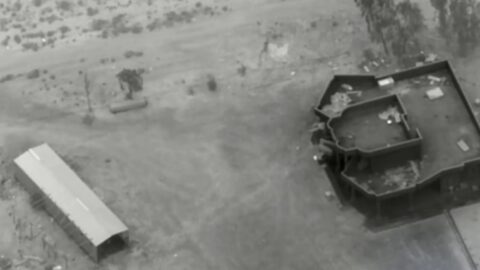

Recent Comments